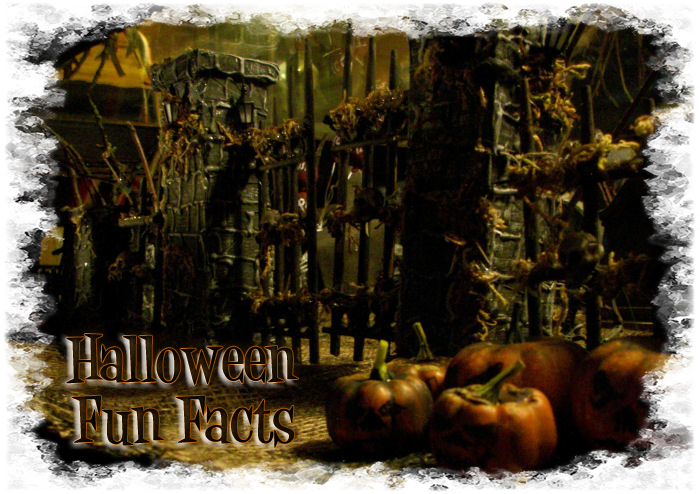
Next Room
20 Halloween Fun Facts
01. Because the movie Halloween (1978) was on such a tight budget, they had to use the cheapest mask they could find for the character Michael Meyers, which turned out to be a William Shatner Star Trek mask. Shatner initially didn't know the mask was in his likeness, but when he found out years later, he said he was honored.
02. The first Jack O'Lanterns were actually made from turnips.
03. Halloween is the second highest grossing commercial holiday after Christmas.
04. The word "witch" comes from the Old English wicce, meaning "wise woman." In fact, wiccan were highly respected people at one time. According to popular belief, witches held one of their two main meetings, or sabbats, on Halloween night.
05. Samhainophobia is the fear of Halloween.
06. Fifty percent of kids prefer to receive chocolate candy for Halloween, compared with 24% who prefer non-chocolate candy and 10% who preferred gum.
07. The owl is a popular Halloween image. In Medieval Europe, owls were thought to be witches, and to hear an owl's call meant someone was about to die.
08. According to Irish legend, Jack O'Lanterns are named after a stingy man named Jack who, because he tricked the devil several times, was forbidden entrance into both heaven and hell. He was condemned to wander the Earth, waving his lantern to lead people away from their paths.
09. The largest pumpkin ever measured was grown by Norm Craven, who broke the world record in 1993 with a 836 lb. pumpkin.
10.Stephen Clarke holds the record for the world's fastest pumpkin carving time: 24.03 seconds, smashing his previous record of 54.72 seconds. The rules of the competition state that the pumpkin must weigh less than 24 pounds and be carved in a traditional way, which requires at least eyes, nose, ears, and a mouth.
11. Trick-or-treating evolved from the ancient Celtic tradition of putting out treats and food to placate spirits who roamed the streets at Samhain, a sacred festival that marked the end of the Celtic calendar year.
12. "Souling" is a medieval Christian precursor to modern-day trick-or-treating. On Hallowmas (November 1), the poor would go door-to-door offering prayers for the dead in exchange for soul cakes.
13. The first known mention of trick-or-treating in print in North America occurred in 1927 in Blackie, Alberta, Canada.
14. "Halloween" is short for "Hallows' Eve" or "Hallows' Evening," which was the evening before All Hallows' (sanctified or holy) Day or Hallowmas on November 1. In an effort to convert pagans, the Christian church decided that Hallowmas or All Saints' Day (November 1) and All Souls' Day (November 2) should assimilate sacred pagan holidays that fell on or around October 31.
15. Black and orange are typically associated with Halloween. Orange is a symbol of strength and endurance and, along with brown and gold, stands for the harvest and autumn. Black is typically a symbol of death and darkness and acts as a reminder that Halloween once was a festival that marked the boundaries between life and death.
16. Ireland is typically believed to be the birthplace of Halloween.
17. With their link to the ancient Celtic festival of Samhain (a precursor to Halloween) and later to witches, cats have a permanent place in Halloween folklore. During the ancient celebration of Samhain, Druids were said to throw cats into a fire, often in wicker cages, as part of divination proceedings.
18. Scarecrows, a popular Halloween fixture, symbolize the ancient agricultural roots of the holiday.
19. Halloween has variously been called All Hallows' Eve, Witches Night, Lamswool, Snap-Apple Night, Samhaim, and Summer's End.
20.Halloween was influenced by the ancient Roman festival Pomona, which celebrated the harvest goddess of the same name. Many Halloween customs and games that feature apples (such as bobbing for apples) and nuts date from this time. In fact, in the past, Halloween has been called San-Apple Night and Nutcrack Night.
This Haunted House of Horror is brought to you by Manimal and Heidi!